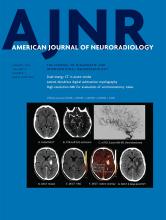Abstract
BACKGROUND AND PURPOSE: Temporal lobe epilepsy, structural or nonlesional, may negatively affect language function. However, little is known about the lesion-specific influence on language networks. We hypothesized that different epileptogenic lesions are related to distinct alterations in the functional language connectome detected by fMRI.
MATERIALS AND METHODS: One hundred one patients with epilepsy due to mesiotemporal sclerosis (21 left, 22 right), low-grade mesiotemporal tumors (12 left), or nonlesional temporal lobe epilepsy (22 left, 24 right) and 22 healthy subjects performed 3T task-based language fMRI. Task-based activation maps (laterality indices) and functional connectivity analysis (global and connectivity strengths between language areas) were correlated with language scores.
RESULTS: Laterality indices based on fMRI activation maps failed to discriminate among patient groups. Functional connectivity analysis revealed the most extended language network alterations in left mesiotemporal sclerosis (involving the left temporal pole, left inferior frontal gyrus, and bilateral premotor areas). The other patient groups showed less extended but also predominantly ipsilesional network changes compared with healthy controls. Left-to-right hippocampal connectivity strength correlated positively with naming function (P = .01), and connectivity strength between the left Wernicke area and the left hippocampus was linked to verbal fluency scores (P = .01) across all groups.
CONCLUSIONS: Different pathologies underlying temporal lobe epilepsy are related to distinct alterations of the functional language connectome visualized by fMRI functional connectivity analysis. Network analysis allows new insights into language organization and provides possible imaging biomarkers for language function. These imaging findings emphasize the importance of a personalized treatment strategy in patients with epilepsy.
ABBREVIATIONS:
- FC
- functional connectivity
- HC
- hippocampus
- LI
- laterality index
- MTS
- mesiotemporal sclerosis
- nl-TLE
- nonlesional TLE
- TLE
- temporal lobe epilepsy
- © 2020 by American Journal of Neuroradiology












